A personal trainer has shared the workout moves she uses with her clients to help them build a strong core, and revealed why having good core muscles is so much more than just having visible abs.
Rachael Attard, from Sydney, said hundreds of clients she works with come to her asking about improving their waistline, and she always tells them it’s helpful to think of their core as a ‘box’.
This box includes the diaphragm on the top, the pelvic floor and hip muscles on the bottom, ab muscles to the front and lower back and glute muscles on the back.

A personal trainer has revealed the workout moves she uses with her clients to help them build a strong core (PT Rachael Attard pictured)
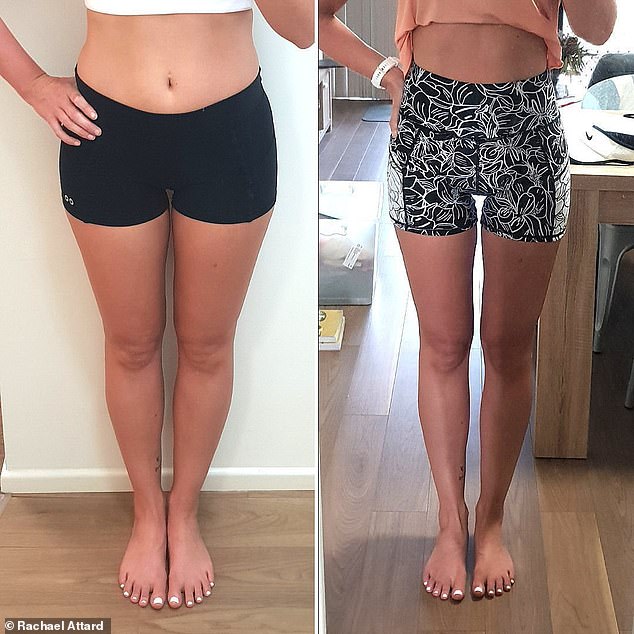
Rachael Attard said hundreds of clients come to her asking about improving their waist, and she tells them it’s helpful to think of their core as a ‘box’ (a client transformation pictured)
‘Building a strong core is important to developing a healthy, strong body overall,’ Rachael wrote on her website.
‘Forgetting about core muscles can lead to injury when working out or when doing everyday tasks, such as lifting a child or gardening.’
In fact, if you’re someone who works out a lot but who doesn’t focus on your core, you could inadvertently be causing imbalances throughout your entire body.

‘Building a strong core is important to developing a healthy, strong body overall,’ Rachael (pictured) said – as it means you’re more likely to nail exercise moves without getting injured
Rachael Attard’s six workout moves to build a strong core
MOVE ONE: BRIDGE – Tighten your abdominal and buttock muscles by pushing your low back into the ground. Raise your hips to create a straight line from your knees to your shoulders. Squeeze your core and pull your belly button back toward your spine. Hold and lower.

Rachael said there are many moves that are good for your core, including a plank (pictured)
MOVE TWO: CRUNCH – Lie down on your back. Plant your feet on the floor, hip-width apart. Bend your knees and place your arms across your chest. Contract your abs and inhale. Exhale and lift your upper body, keeping your head and neck relaxed. Inhale and return to the starting position.
MOVE THREE: PLANK – Plant hands directly under shoulders (slightly wider than shoulder width) like you’re about to do a push-up. Ground toes into the floor and squeeze glutes to stabilise your body. Your legs should be working, too – be careful not to lock or hyperextend your knees. Hold.
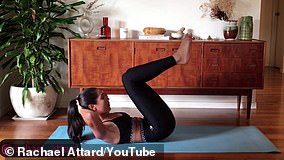
She also swears by crunches, which have to be performed correctly for success (pictured)
MOVE FOUR: MOUNTAIN CLIMBER – Get into a plank position, making sure to distribute your weight evenly between your hands and your toes. Pull your right knee into your chest as far as you can. Switch legs, pulling one knee out and bringing the other knee in.
MOVE FIVE: SIDE PLANK WITH ROTATION – Start in a traditional side plank position. Raise your top arm straight above you. Then lower your arm and rotate your core as you thread your top arm through the space under you. Unthread and repeat.
MOVE SIX: TOE TOUCHES – Start on you back with legs long reaching towards the ceiling. Bring head, neck, and shoulders off the mat and reach arms up towards the feet. Return to the tips of the shoulders and repeat.
Advertisement 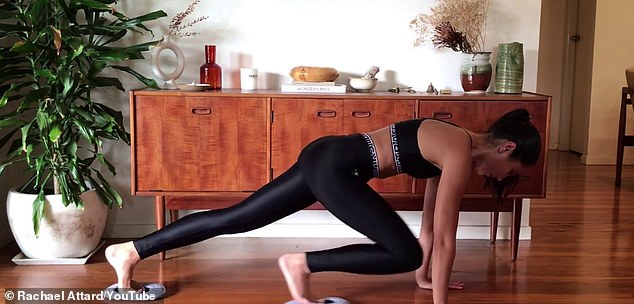
Rachael said mountain climbers (pictured) are one of the best moves you can do to target your core

Planks and side planks are great for activating your entire body, not just your core muscles (pictured)
According to the PT, building a strong core means doing exercises that work on ‘all parts of your core, not just your abs’.
When doing core movements like crunches and sit ups, be careful not to do them too quickly – as this can lead to jerky spinal movements and could cause more harm than good.
Instead, Rachael recommends you do all of the movements slowly and steadily, holding each one to allow the muscle fibres to strengthen and develop.
Her favourite moves include bridges – which activate your glutes and lower back, crunches – which are great provided you don’t put too much pressure on your spine, and planks – which work the entire body.
She also likes to encourage clients to do mountain climbers, side planks with rotation and toe taps or touches.
‘Doing a side plank with a rotation will help strengthen your arms, shoulders, and obliques,’ Rachael said.
‘The obliques can be hard to target and many people forget to focus on them.’
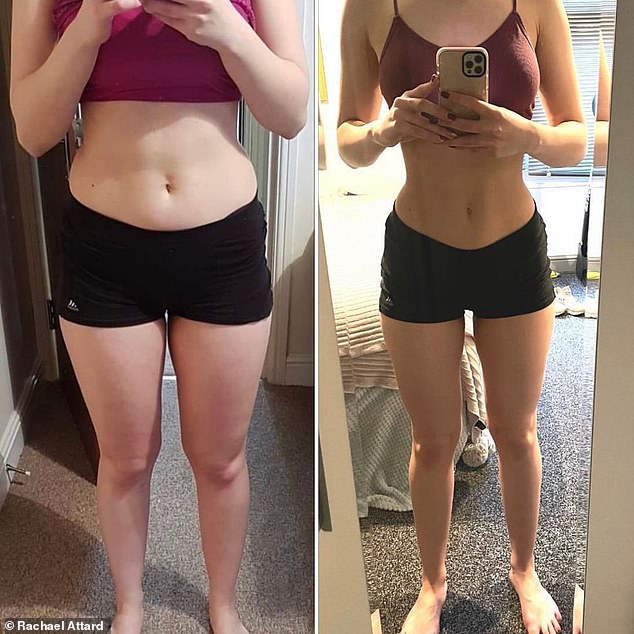
Not only does having core muscles lead to improved balance and stability, but it means you’re less likely to fall over and hurt yourself (one of Rachael’s client transformations pictured)
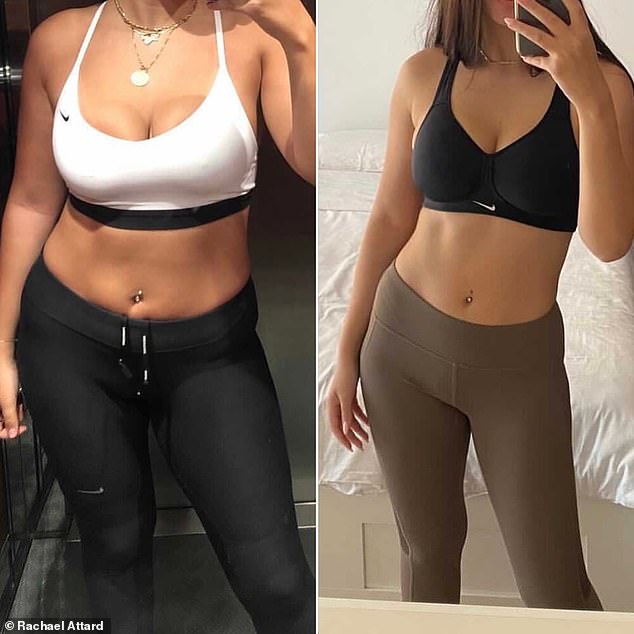
‘A strong core can reduce back pain and prevent future health problems,’ Rachael said (client transformation pictured)
The benefits of having a strong core are myriad, Rachael said.
Not only does having core muscles lead to improved balance and stability, but it means you’re less likely to fall over and hurt yourself, and more likely to perform workout moves correctly.
‘A strong core can reduce back pain and prevent future health problems,’ Rachael said.
‘Weak core muscles can lead to poor posture and muscle injuries, and strengthening these muscles protects your back from future problems.’
If you have back pain, a physiotherapist will typically advise you to do core moves at home to improve your strength.
To find out more about Rachael Attard, you can visit her website here.
What are the different body types and their characteristics? 
This system breaks down all of the body types into three unique stereotypes: ectomorphs, mesomorphs and endomorphs (pictured)
* Ectomorph:
Ectomorph body types are very tall and slim. They don’t have much muscle and find it difficult to put on muscle or any weight in general.
* Mesomorph:
The mesomorph is between the ectomorph and the endomorph, and they are defined by a muscular frame and broader shoulders than their waist.
* Endomorph:
An endomorph body type is usually a larger curvier figure. They are quite commonly a stocky build and their bodies hold onto fat well and find it hard to lose.
Advertisement
Source link : https://www.dailymail.co.uk/femail/article-10019273/How-build-strong-core-Personal-trainer-reveals-workout-moves-uses-clients.html











